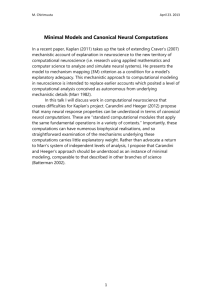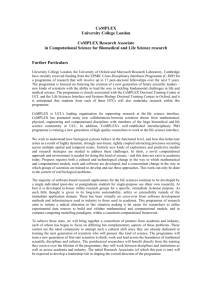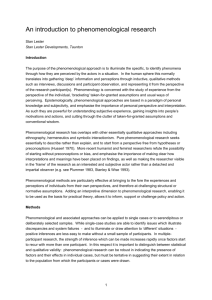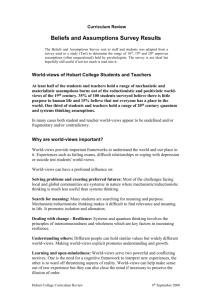Course Syllabus
advertisement
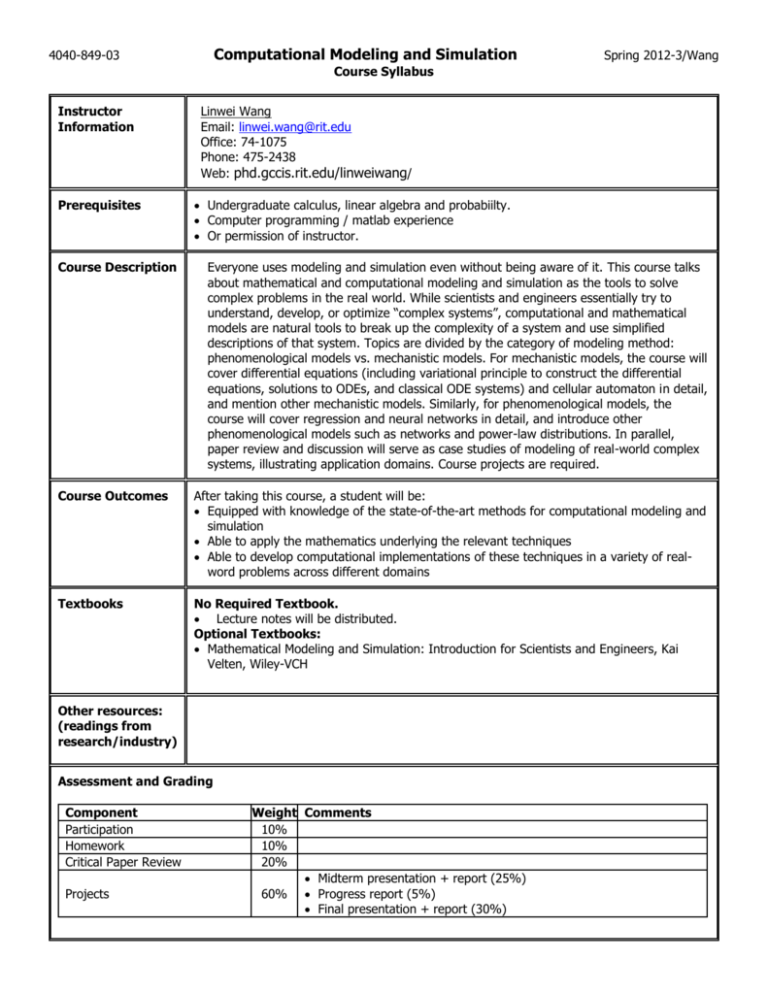
Computational Modeling and Simulation 4040-849-03 Spring 2012-3/Wang Course Syllabus Instructor Information Prerequisites Course Description Linwei Wang Email: linwei.wang@rit.edu Office: 74-1075 Phone: 475-2438 Web: phd.gccis.rit.edu/linweiwang/ Undergraduate calculus, linear algebra and probabiilty. Computer programming / matlab experience Or permission of instructor. Everyone uses modeling and simulation even without being aware of it. This course talks about mathematical and computational modeling and simulation as the tools to solve complex problems in the real world. While scientists and engineers essentially try to understand, develop, or optimize “complex systems”, computational and mathematical models are natural tools to break up the complexity of a system and use simplified descriptions of that system. Topics are divided by the category of modeling method: phenomenological models vs. mechanistic models. For mechanistic models, the course will cover differential equations (including variational principle to construct the differential equations, solutions to ODEs, and classical ODE systems) and cellular automaton in detail, and mention other mechanistic models. Similarly, for phenomenological models, the course will cover regression and neural networks in detail, and introduce other phenomenological models such as networks and power-law distributions. In parallel, paper review and discussion will serve as case studies of modeling of real-world complex systems, illustrating application domains. Course projects are required. Course Outcomes After taking this course, a student will be: Equipped with knowledge of the state-of-the-art methods for computational modeling and simulation Able to apply the mathematics underlying the relevant techniques Able to develop computational implementations of these techniques in a variety of realword problems across different domains Textbooks No Required Textbook. Lecture notes will be distributed. Optional Textbooks: Mathematical Modeling and Simulation: Introduction for Scientists and Engineers, Kai Velten, Wiley-VCH Other resources: (readings from research/industry) Assessment and Grading Component Participation Homework Critical Paper Review Projects Weight Comments 10% 10% 20% Midterm presentation + report (25%) 60% Progress report (5%) Final presentation + report (30%) Course Schedule: 1. Principle of Mathematical Modeling: Systems, Models, and Simulations 2. Mechanistic Models 1. Differential equations 1. Variational principle 2. Solutions to ODE 3. Classic ODE systems 2. Cellular automaton 3. Other mechanistic models 3. Phenomenological Models 1. Regression 2. Neural networks 3. Other phenomenological models 4. Summary Apart from homework and assignments for each lecture, each student will complete 1 course project. Each student will choose a topic of their interest, preferably related to their research area. Each student will propose, report the progress, and present the final results of the project along the 11-week schedule of the course. At week 3, each student will submit a progress report to describe their idea of the project. For midterm, each student will formally present the proposal for their project. Deliverables include a technical report and presentation. At week 8, each student will submit another 1-page progress report describing their current progress on the project. At week 11, each student will submit their project. Deliverables include implementation of the project, results, technical report, and presentation. Specification for the progress reports, project reports and presentation will be given for each task.
